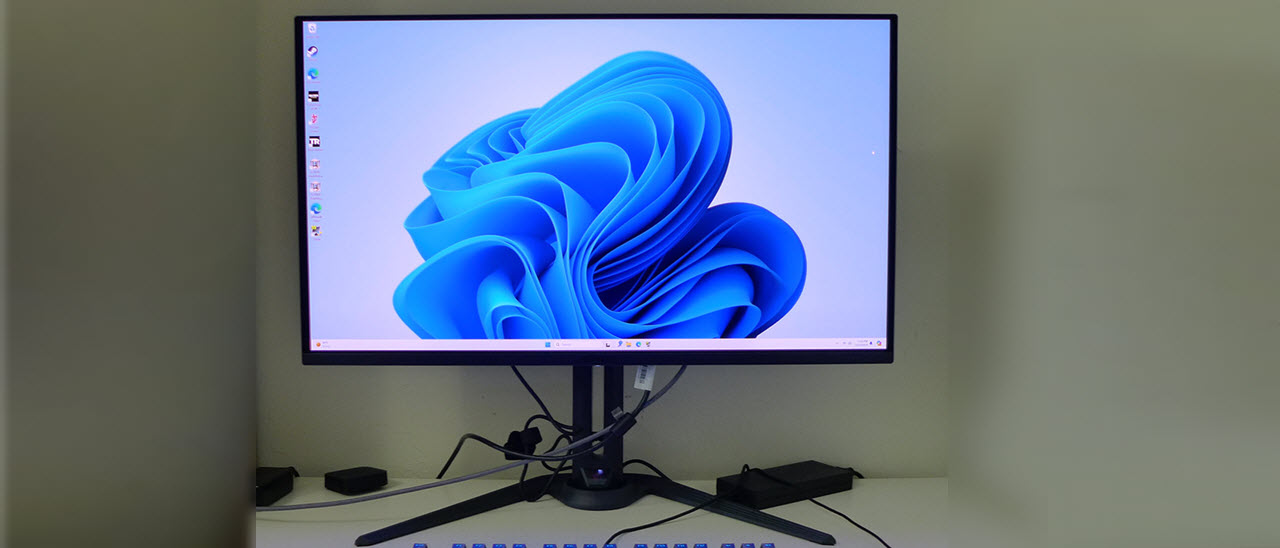Why you can trust Tom's Hardware
To read about our monitor tests in-depth, please check out Display Testing Explained: How We Test PC Monitors. We cover brightness and contrast testing on page two.
Uncalibrated – Maximum Backlight Level
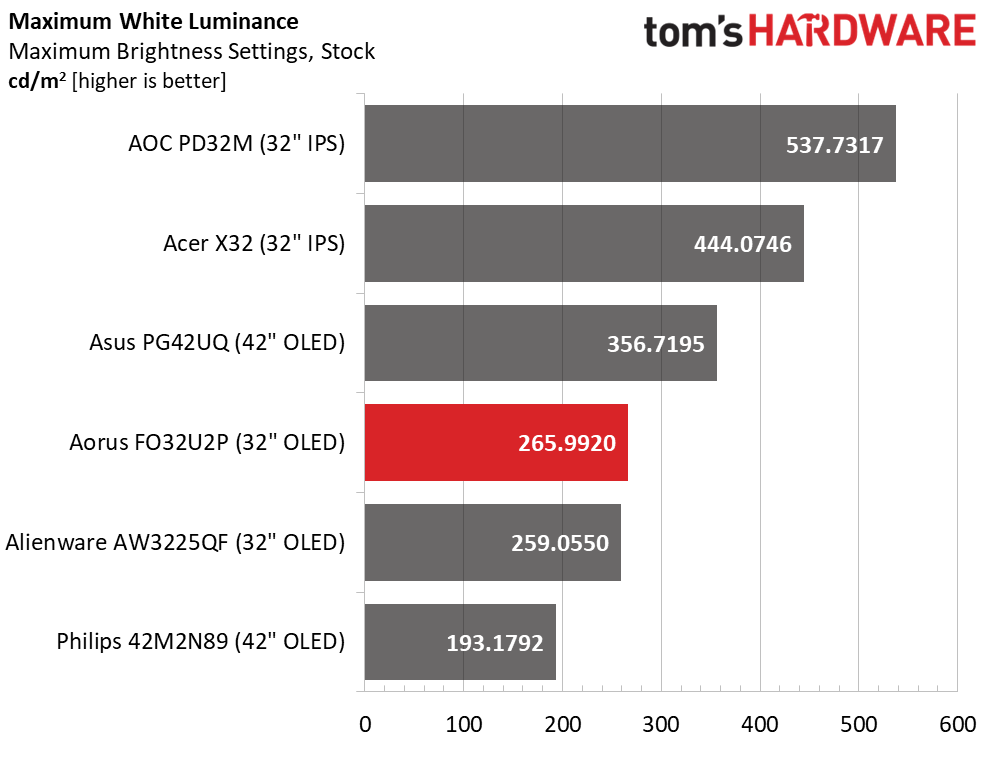
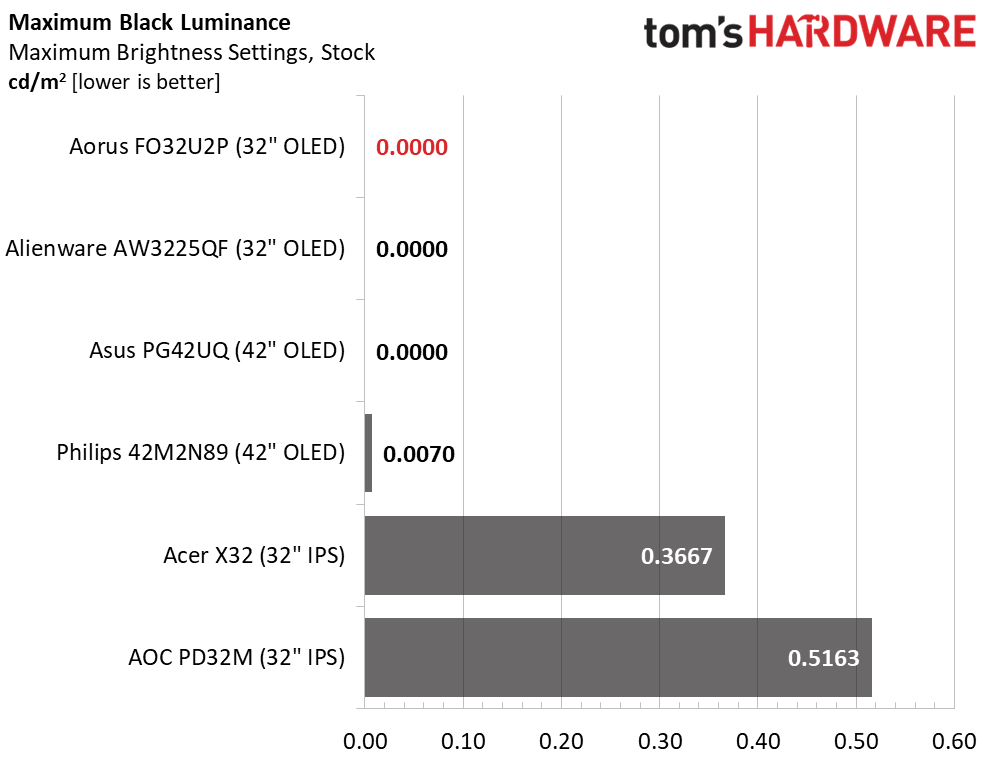
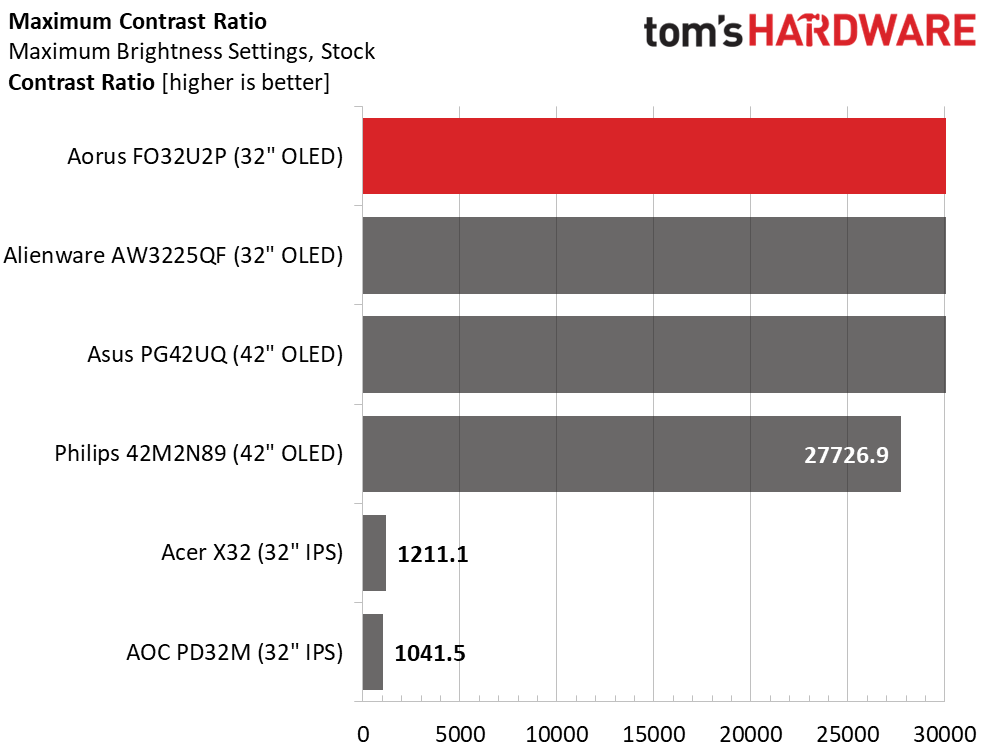
The FO32U2P isn’t super bright in SDR mode but with 265 nits peak, there is more than enough light output for indoor environments. My office gets plenty of Florida sunshine and I still had to turn down the brightness slider once testing was complete to achieve comfort. Yes, the Asus is brighter, but you won’t last long running it at 356 nits before fatigue sets in. The same is true of the Mini LED monitors, they are much brighter than is practical for standard work or gameplay use.
As is typical for OLEDs, the FO32U2P has unmeasurable black levels, so contrast can’t be determined.
After Calibration to 200 nits
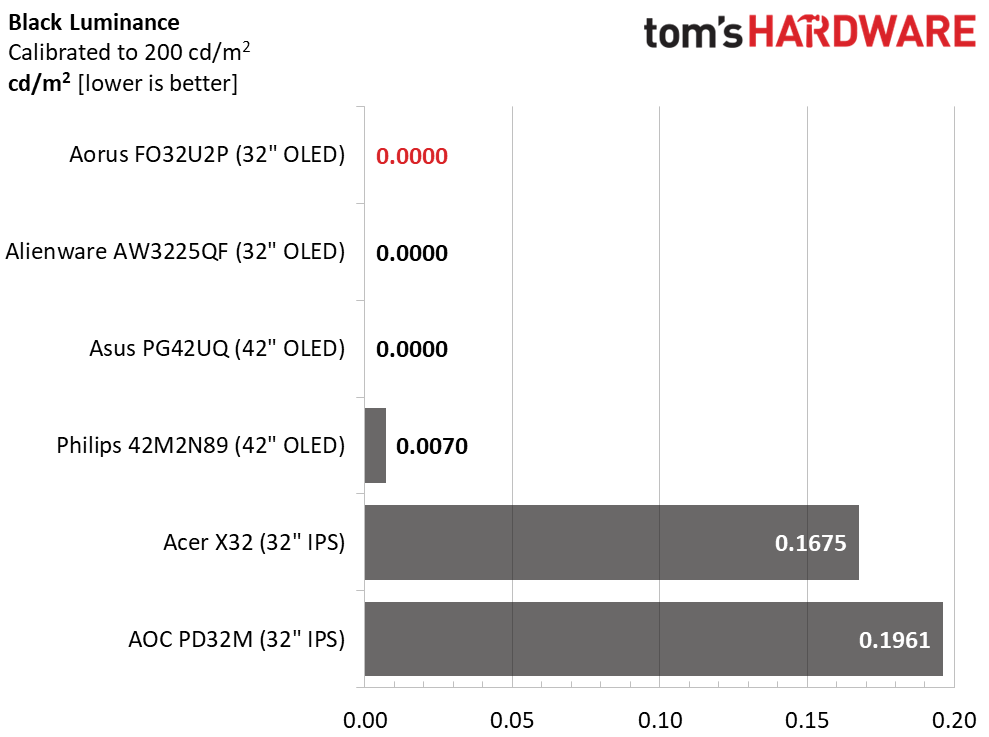
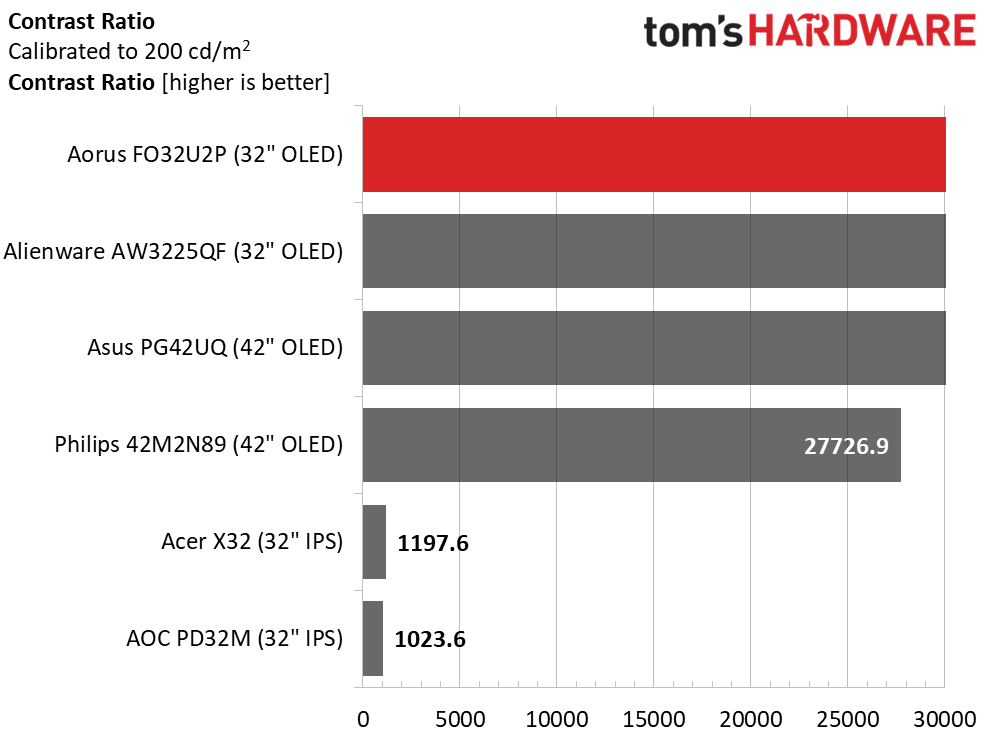
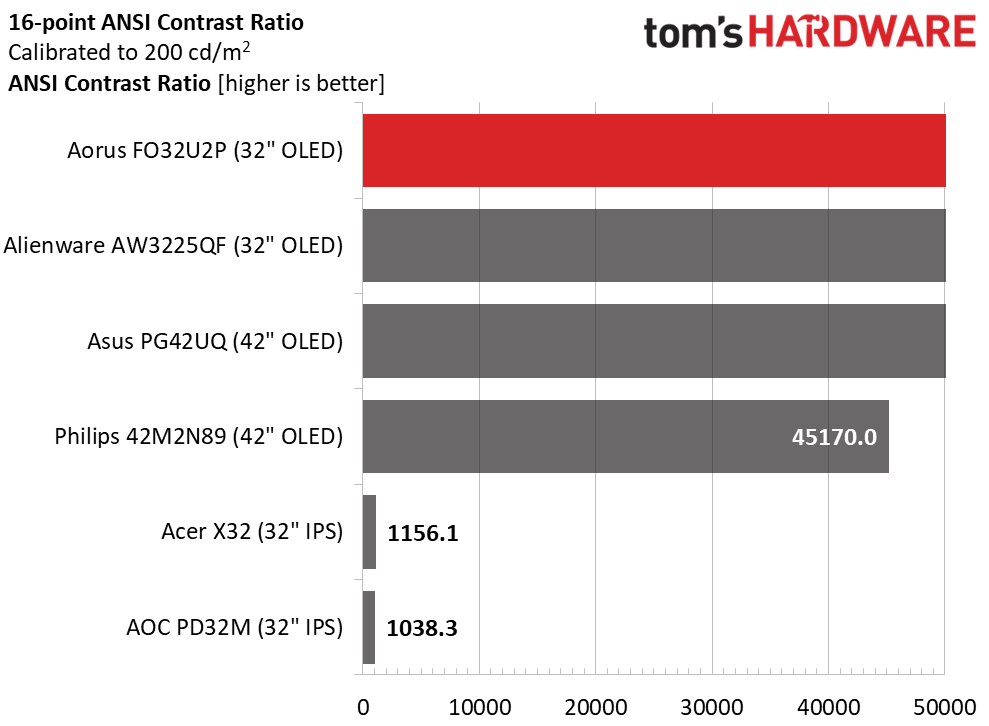
Since variable brightness was not in play, I set the FO32U2P to 200 nits using a full field pattern. This is to maintain a level playing field with other monitors. Once testing was complete, I lowered the brightness to a more comfortable level. Contrast is still unmeasurable for the OLED screens. The Mini LED monitors were tested with their local dimming turned off, so the numbers reflect their native IPS contrast.
The Philips OLED is the one exception I have encountered. For some reason, it does not fully shut down its pixel matrix when a black pattern is displayed. Though this black level is very low, it is measurable, hence the 27,726.9:1 contrast ratio. That is still far above anything LCD is capable of, but it is slightly less impressive than other OLEDs.
The ANSI test shows the same behavior from all monitors. The FO32U2P can’t be measured, and the IPS screens are at 1,000-1,100:1. The Philips manages 45,170:1, which is excellent, just not as good as other OLEDs.
Test Takeaway: I can’t say it enough: if you want the best contrast and the most impactful image possible, buy an OLED. The FO32U2P delivers typical OLED quality in the contrast tests. Even the Philips will look better than any Mini LED monitor. At this point in time, no display technology has more dynamic range than OLED. And what could be more than infinite?
MORE: Best Gaming Monitors
MORE: How We Test PC Monitors
MORE: How to Buy a PC Monitor
Current page: Brightness and Contrast
Prev Page Response, Input Lag, Viewing Angles and Uniformity Next Page Grayscale, Gamma and Color
Christian Eberle is a Contributing Editor for Tom's Hardware US. He's a veteran reviewer of A/V equipment, specializing in monitors. Christian began his obsession with tech when he built his first PC in 1991, a 286 running DOS 3.0 at a blazing 12MHz. In 2006, he undertook training from the Imaging Science Foundation in video calibration and testing and thus started a passion for precise imaging that persists to this day. He is also a professional musician with a degree from the New England Conservatory as a classical bassoonist which he used to good effect as a performer with the West Point Army Band from 1987 to 2013. He enjoys watching movies and listening to high-end audio in his custom-built home theater and can be seen riding trails near his home on a race-ready ICE VTX recumbent trike. Christian enjoys the endless summer in Florida where he lives with his wife and Chihuahua and plays with orchestras around the state.
